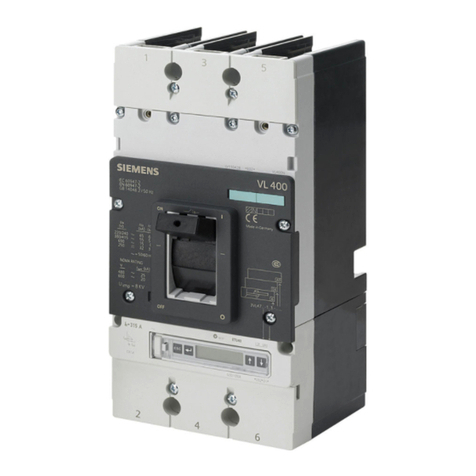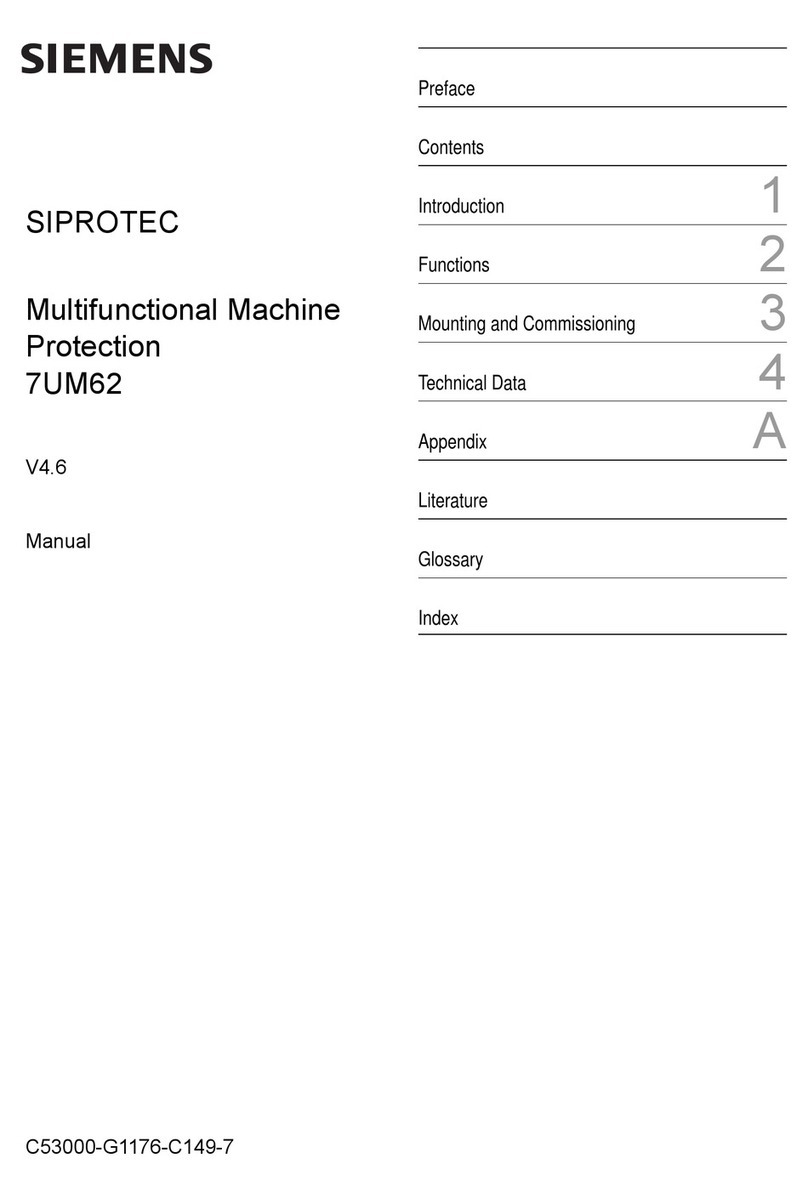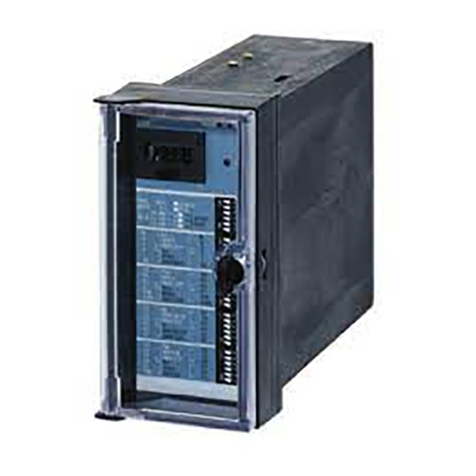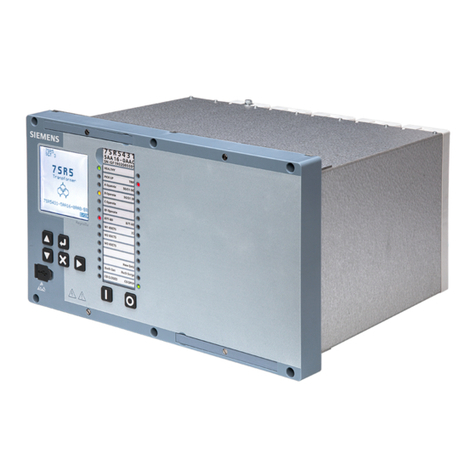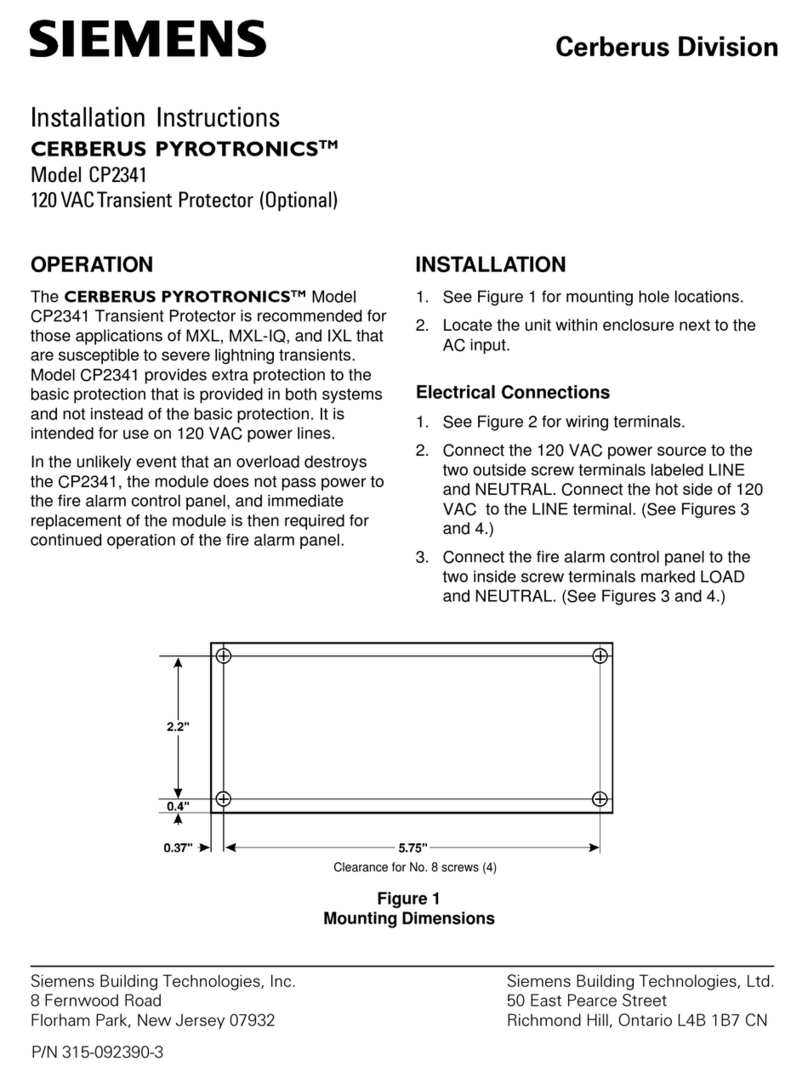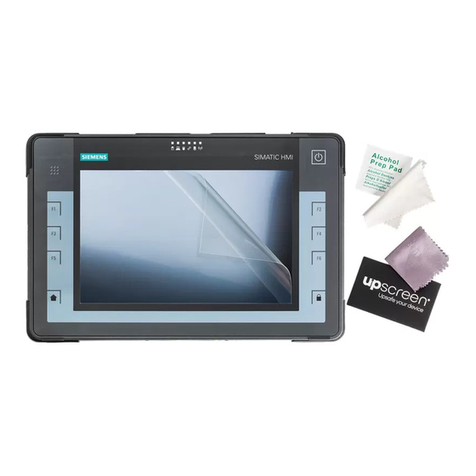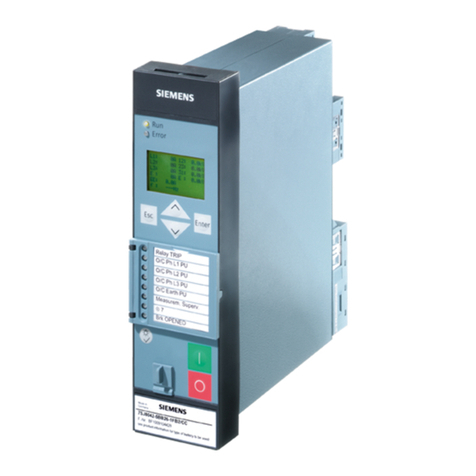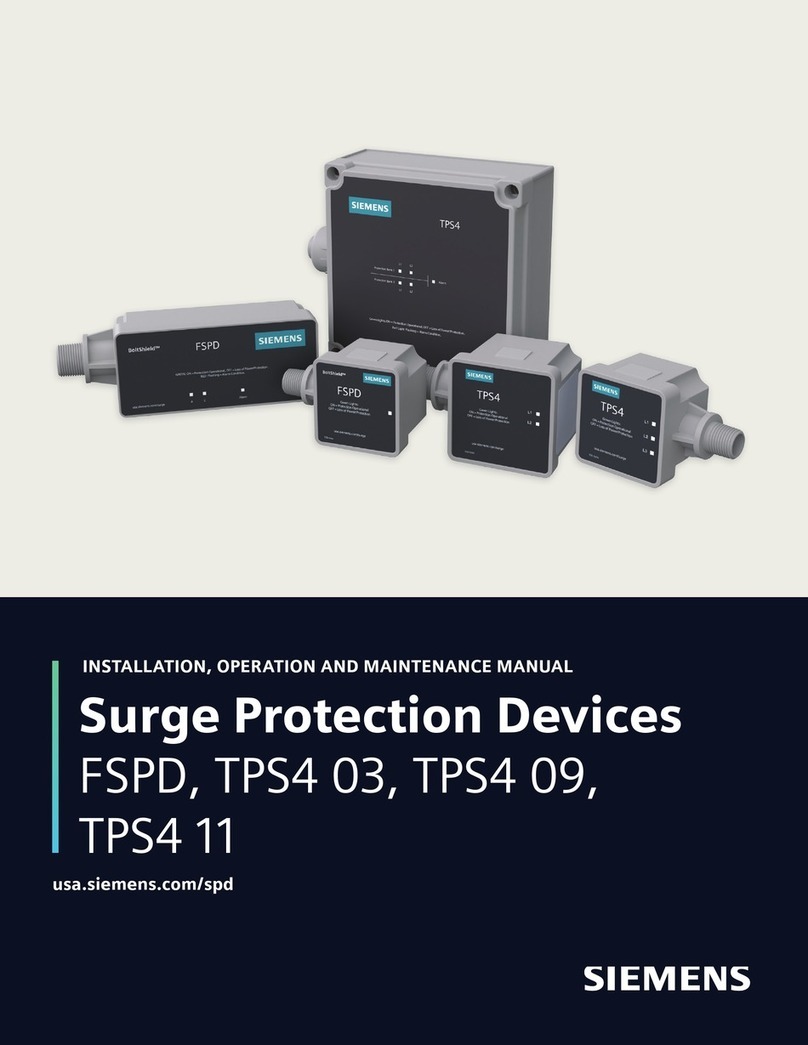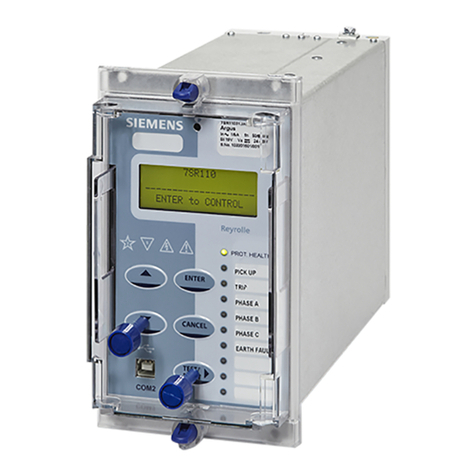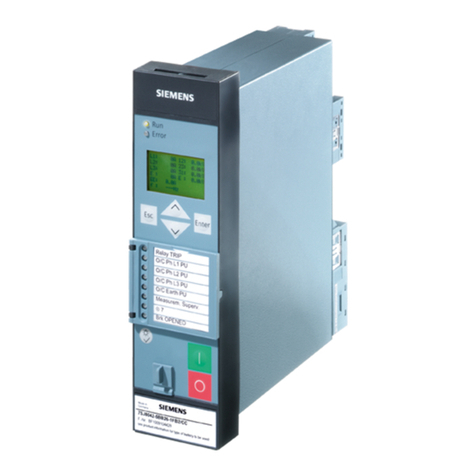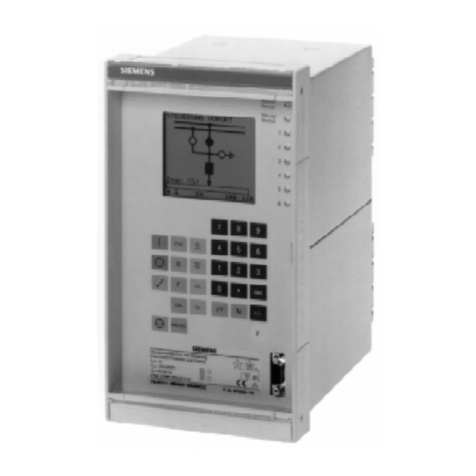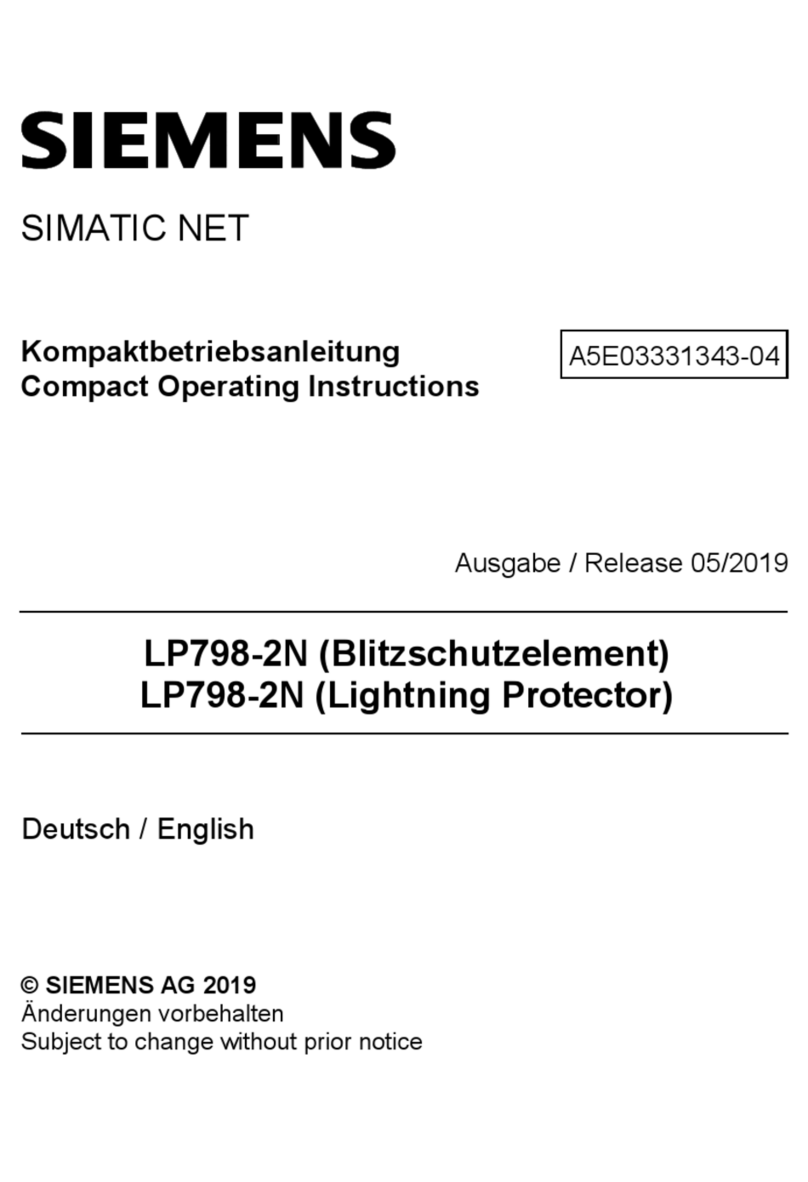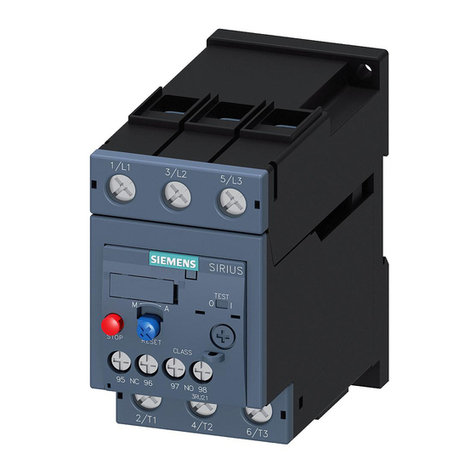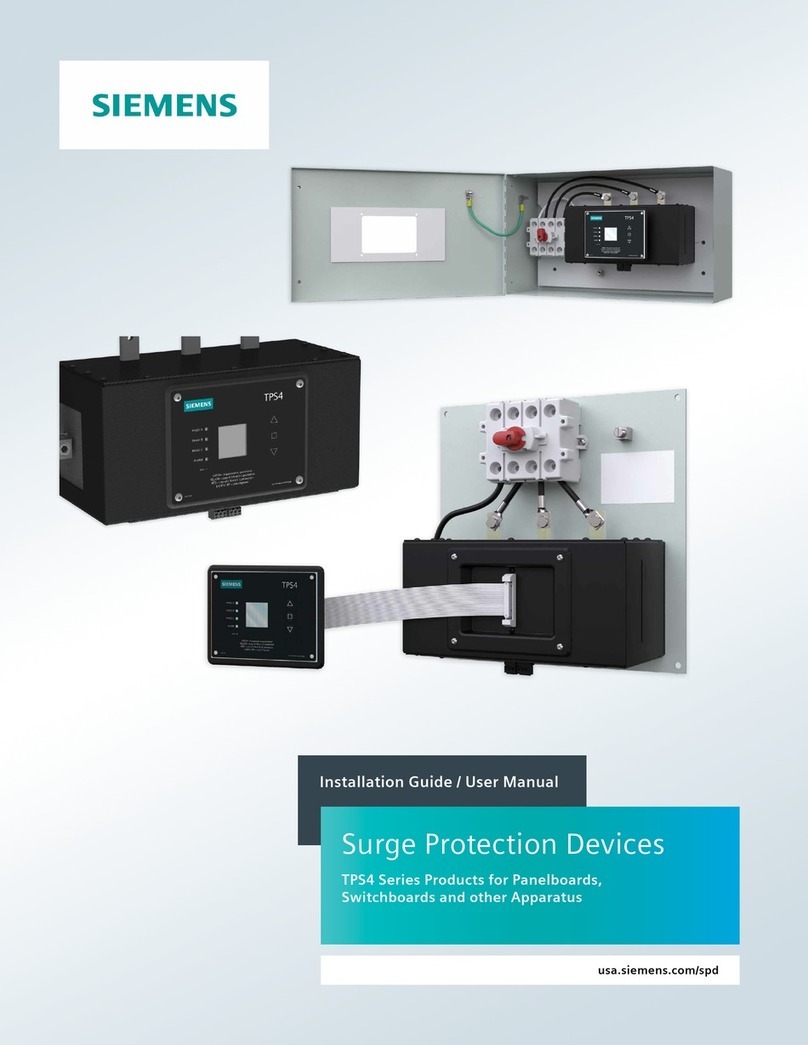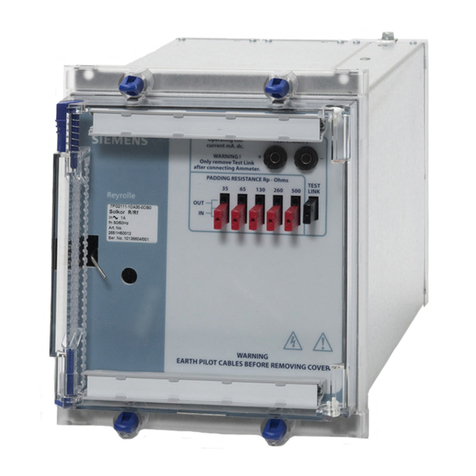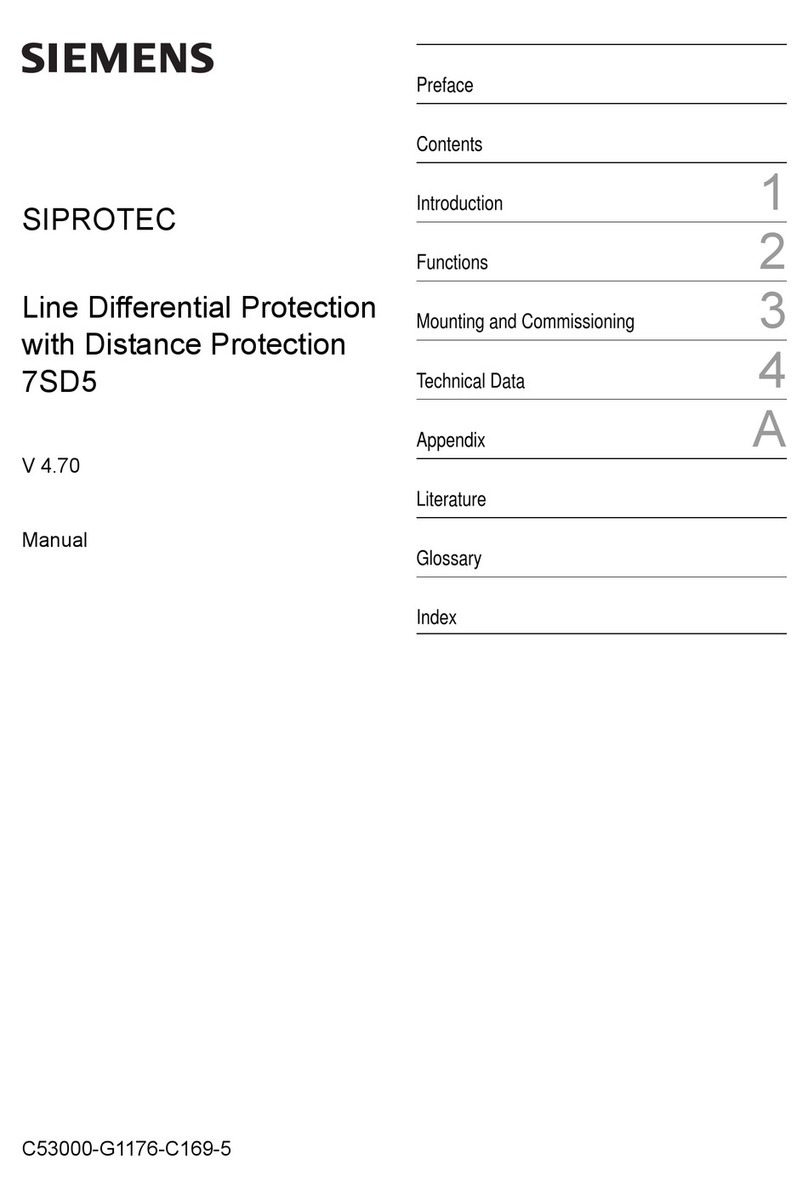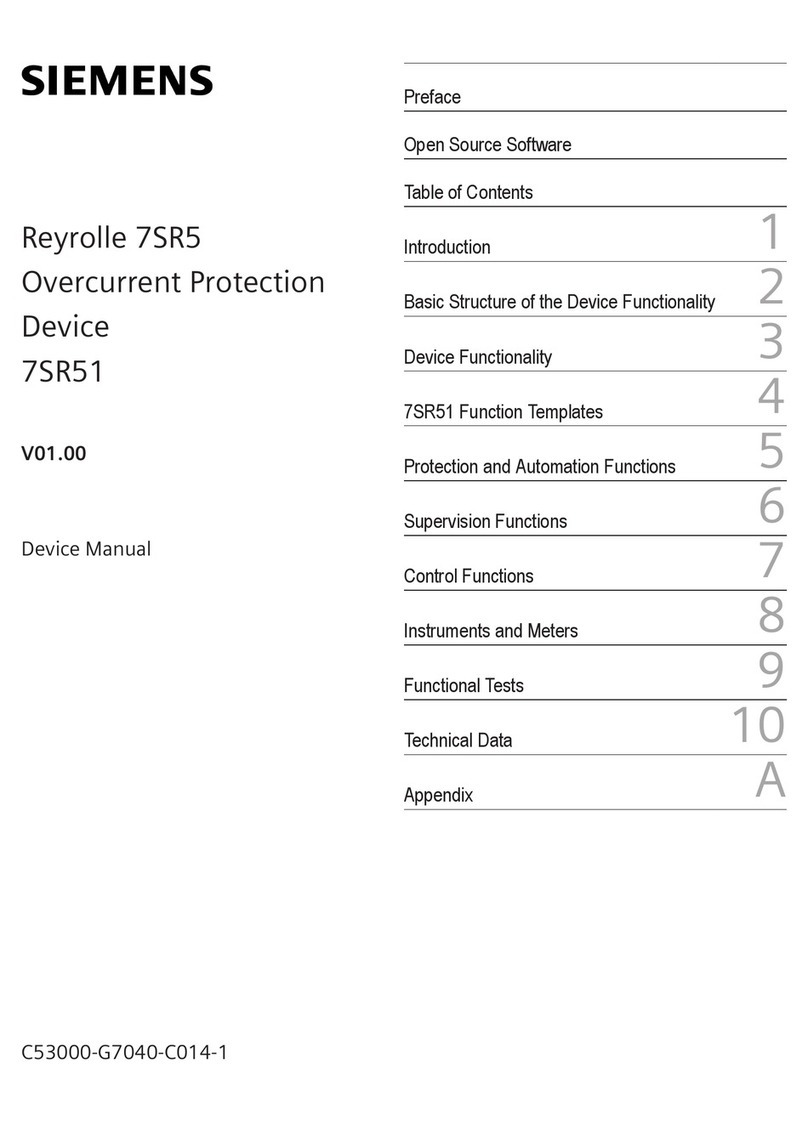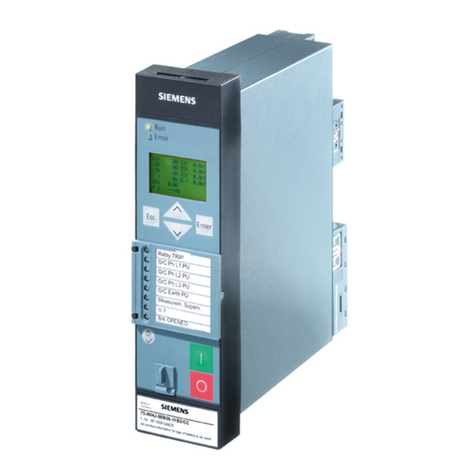
TPS4 13
Pre-Installation
Operating Environment
The standard unit uses a Type 4 enclosure. Flush-mount kits are available as
options. Before installing, ensure that your enclosure type and application
are appropriate with regard to moisture, dirt, excessive dust, flammable
materials or atmospheres, corrosive vapors, etc. Please consult factory if
enclosure needs to be changed. This SPD is designed in an ambient
temperature range of -35°C (-31°F) to +75°C (+167°F) with a relative
humidity of 0% to 95% (noncondensing). Excessive temperature may
inadvertently operate internal thermal overtemperature protectors.
Line Side versus Load Side Installation
The TPS4 13 are tested and qualified as Type 1 SPDs per UL 1449 Fourth Edition (cUL type 2). This SPD can be
installed on the Line Side of the service overcurrent device. Type 1 SPDs may also be installed in Type 2
applications. As a generalization, it is more practical to install as Type 2 on load side of main overcurrent device
for maintenance reasons..
Audible Noise
SPD background noise is negligible or non-existent, and does not restrict the location of installation.
Lead Lengths and Maximizing SPD Performance
SPDs must be located as close to the circuit as possible to minimize parasitic losses. Use the shortest and
straightest possible leads. Pre-Plan installations and ensure that nearest breaker positions are used. If new
construction, adjust breaker locations as appropriate. When longer leads are unavoidable, gently twist leads
together (one to two twists per foot), or tie-wrap leads together..
Voltage Rating
Before installing SPD, verify that it has the same voltage rating as the power distribution system. Compare the
SPDs nameplate voltage or model number and ensure that SPD configuration matches the intended power source.
Circuit Breaker Connected
When connected on load side of main disconnect, we suggest connecting via a 60A circuit breaker. The circuit
breaker is the intended disconnect switch and provides short circuit protection to the connecting conductors.
These SPDs have internal overload protection elements within the product. These SPDs have demonstrated
200kA Short Circuit Current Ratings (SCCRs).
System Grounding
An equipment grounding conductor must be used on all electrical circuits connected to the SPD. For the best
performance, use a single point ground system where the service entrance grounding electrode system is
connected to and bonded to all other available electrodes, building steel, metal water pipes, driven rods, etc. (for
reference see: IEEE Std 142-2007). For sensitive electronics and computer systems, we recommend that the
ground impedance measurement be as low as possible. When metallic raceway is used as an additional
grounding conductor, an insulated grounding conductor should be run inside the raceway. Adequate electrical
continuity must be maintained at all raceway connections. A separate isolated ground for the SPD is NOT
recommended. Proper equipment connections to grounding system and ground grid continuity should be
verified via inspections and testing on a regular basis as part of a comprehensive electrical maintenance program.
On 4-Wire Power Systems, neutral to ground bonding (Main Bonding Jumper) must be installed per the NEC®.
Failure to do so WILL damage SPDs.
4 INSTALLATION, OPERATION AND MAINTENANCE MANUAL
